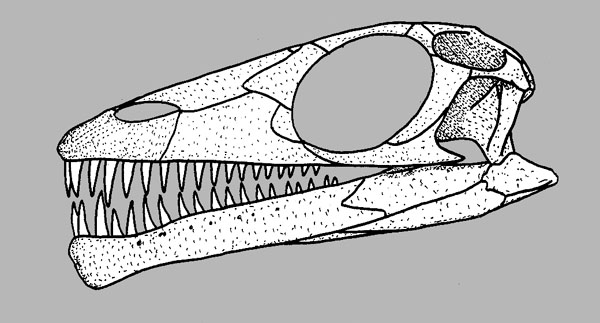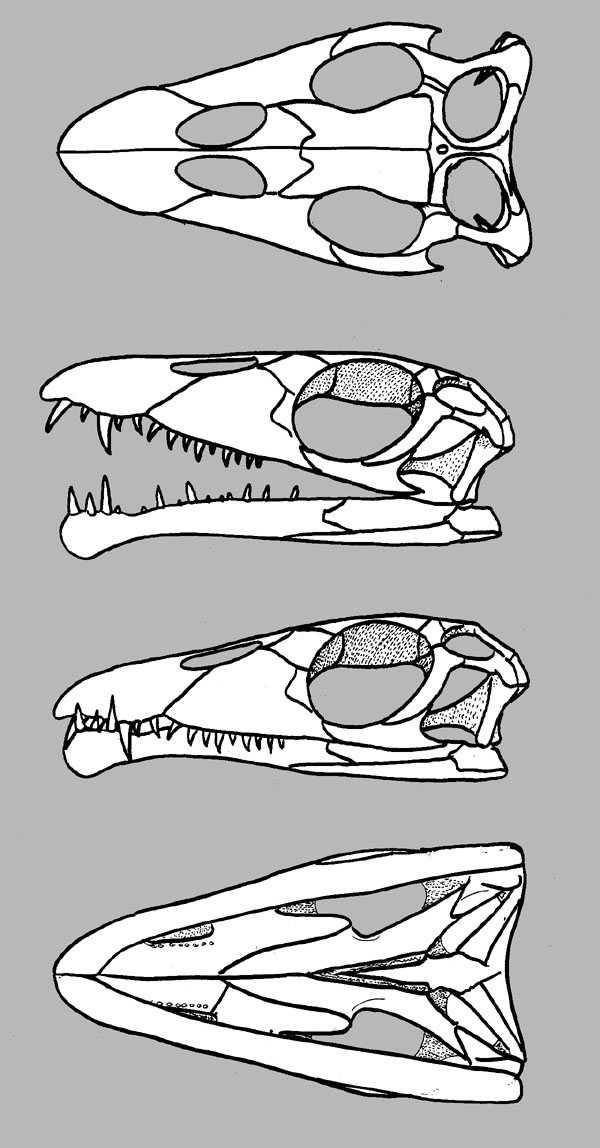MSNM V 3663: Fragmentary skull of a juvenile.
PIMUZ T183 (examplar v of WILD, 1973): Skull and skeleton.
PIMUZ T2787 (examplar i of WILD, 1973): Skull and skeleton.
PIMUZ T2793 (examplar c of WILD, 1973): Skull and skeleton.
PIMUZ T2818 (examplar m of WILD, 1973): Skull and skeleton.
PIMUZ T2819 (examplar q of WILD, 1973): Skeleton.
SNSB-BSPG 1953 XV 2:

Skull after Wild, 1973

New interperatation of skull.
= Tanystropheus cf. T. longobardicus RIEPPEL, JIANG, FRASER, HAO,
MOTANI, SUN & SUN, 2010
Note: The authors refer this specimen to the largest Tanystropheus longobardicus specimens which have been given a new species name and is here moved to that species.
Locality: Heshangsi of Nimaigu Village, Wusha District, Xingyi City, Guizhou Province, China.
Horizon: Zhuganpo Member, Falang Formation.
Biostratigraphy:
Age: Latest Ladinian Stage, Lower Mid Triassic Epoch, Middle Triassic.
Material:
GMPKU-P-1537: Nearly complete skeleton lacking the skull and first few cervical vertebrae.